Bautzen is located just 40 minutes from the Polish border. This city, full of monuments and attractions, stands out primarily for its beautiful architecture. Here’s an interesting fact: in 1002, the city was annexed to Poland, and in 1018, a peace treaty was signed here between Bolesław I the Brave and Henry II. Read on if you want to find out what is worth seeing in Bautzen!
Table of Contents
- 1 Cathedral of St. Peter
- 2 Castle (Ortenburg)
- 3 Town Hall and Main Market Square
- 4 Ruins of St. Nicholas Church
- 5 Peace Bridge (Friedensbrücke)
- 6 Defensive Towers
- 7 Leaning Tower (Reichenturm)
- 8 Old Waterworks (Alte Wasserkunst)
- 9 St. Nicholas Tower (Nicolaiturm)
- 10 Matthias Tower (Matthiasturm)
- 11 Mühltor Gate
- 12 Sorabian Museum
- 13 Museum of Bautzen
- 14 Mustard Museum
- 15 Witch’s House (Hexenhäusel)
- 16 Stasi Prison (Gedenkstätte)
- 17 Biosphere Reserve in the Land of a Thousand Ponds
- 18 House of a Thousand Ponds (Haus der Tausend Teiche)
- 19 Where to stay in Bautzen
Cathedral of St. Peter
The Cathedral of St. Peter is the oldest and one of the largest simultaneous churches in the region. Located in the Fleischmarkt square in the Old Town, it is one of the most important sacred buildings in the area.
The first church on this site was built as early as the year 1000. After a fire in the 17th century, the building was rebuilt in the Baroque style. In the chancel, you can admire a life-sized crucifix made of limewood by Balthasar Permoser. Interestingly, a family named Kuschel lives at the top of the church tower. There are 217 steps leading to their apartment!
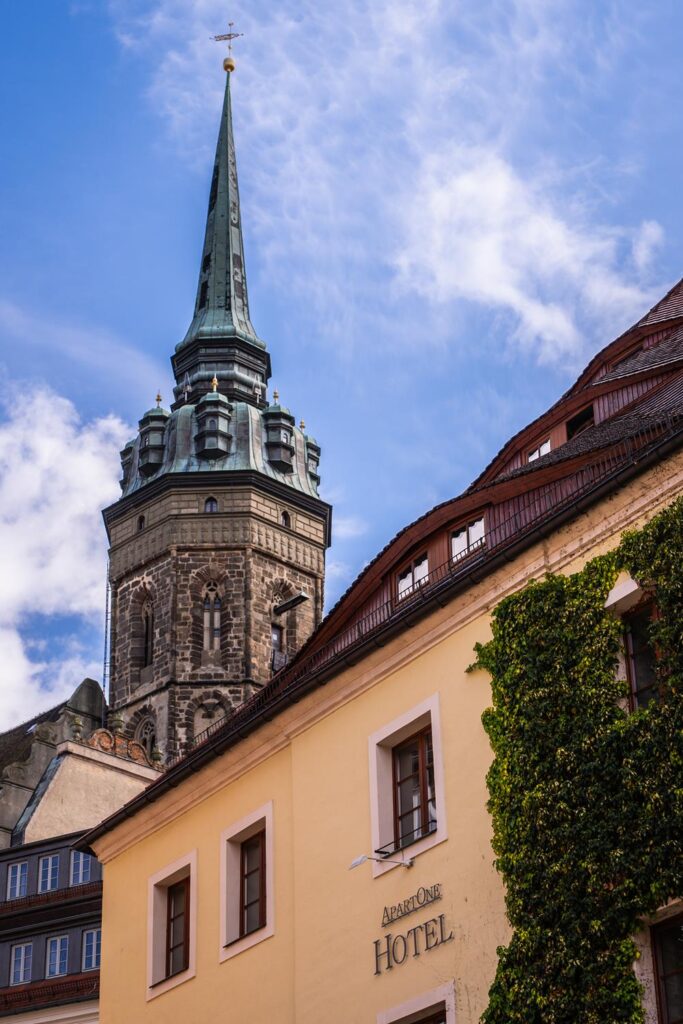
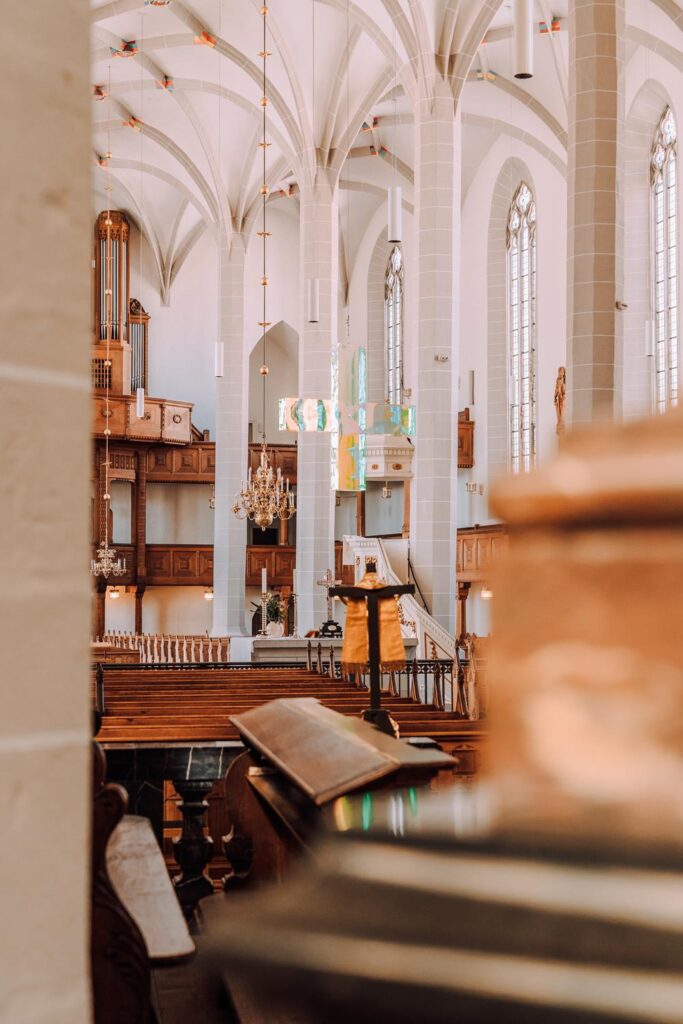
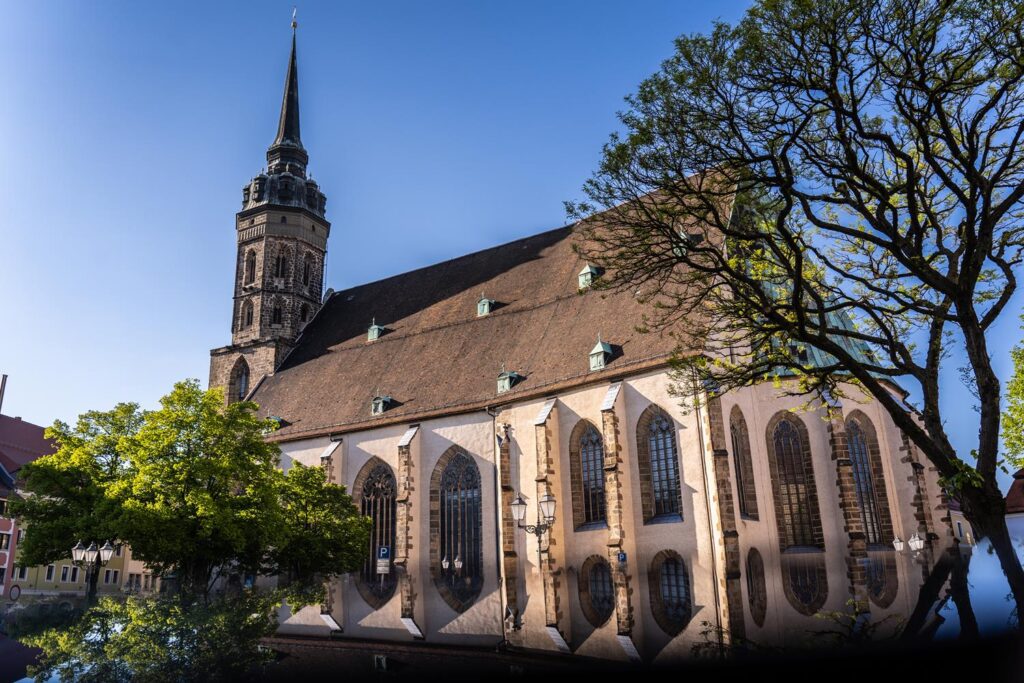
Castle (Ortenburg)
Ortenburg stands in the center of the Old Town. It was built before the year 1000, when the Germans erected it on the site of a captured fort. In later years, it was rebuilt by Matthias Corvinus, the then King of Hungary. The most interesting building in the castle complex is the Matthias Tower, named in his honor.
The castle has retained its Gothic decor with later Renaissance additions. Around the castle, you can still see fragments of defensive walls with towers.
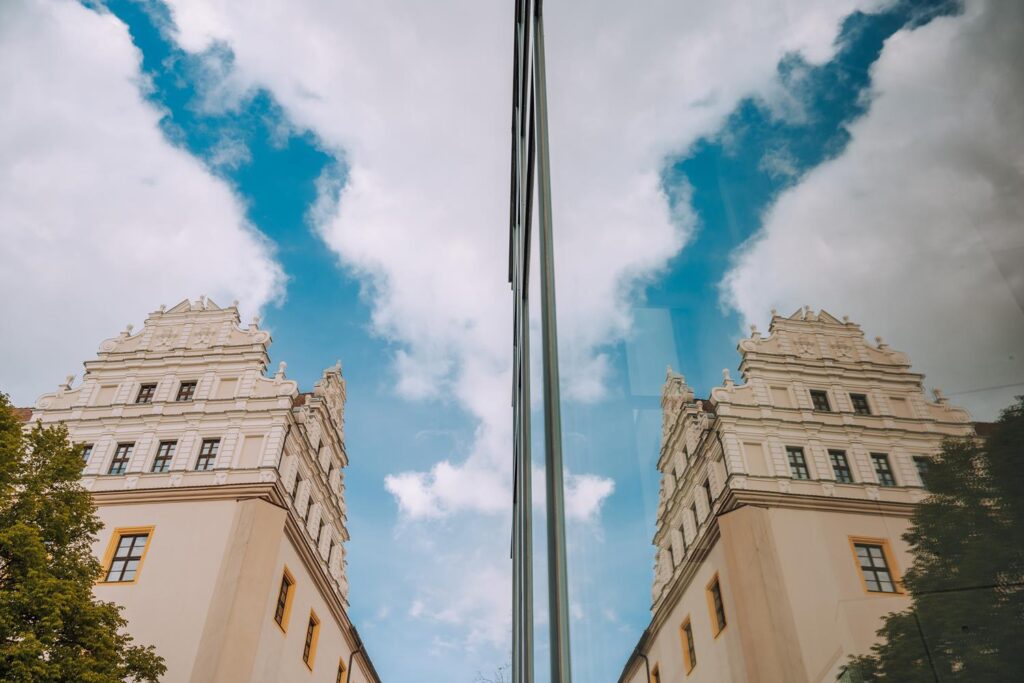
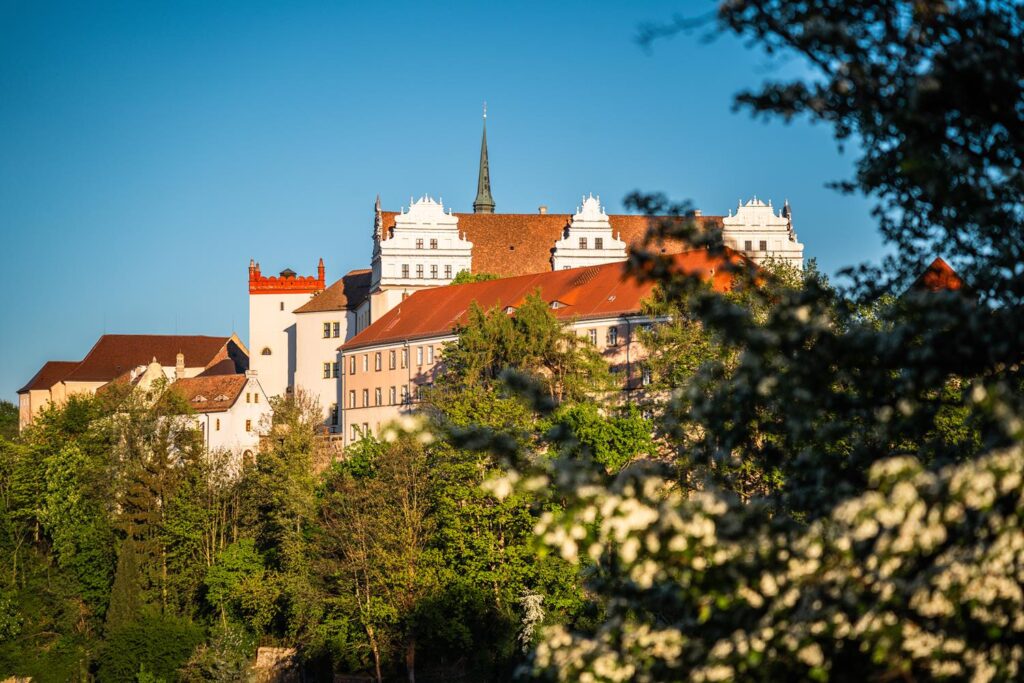
Town Hall and Main Market Square
The Town Hall in Bautzenis located in the Old Town near the aforementioned castle. It is one of the most recognizable buildings in Bautzen. Its original was built in 1213, but nothing remains of it due to reconstructions and destructions. The Town Hall acquired its current appearance in the 18th century.
The Main Market Square, located in the historic area near the Town Hall, is bustling with life every Tuesday, Thursday, and Saturday! Here, many local vendors offer residents and tourists various products such as fruits and vegetables, fresh flowers, and handicrafts.
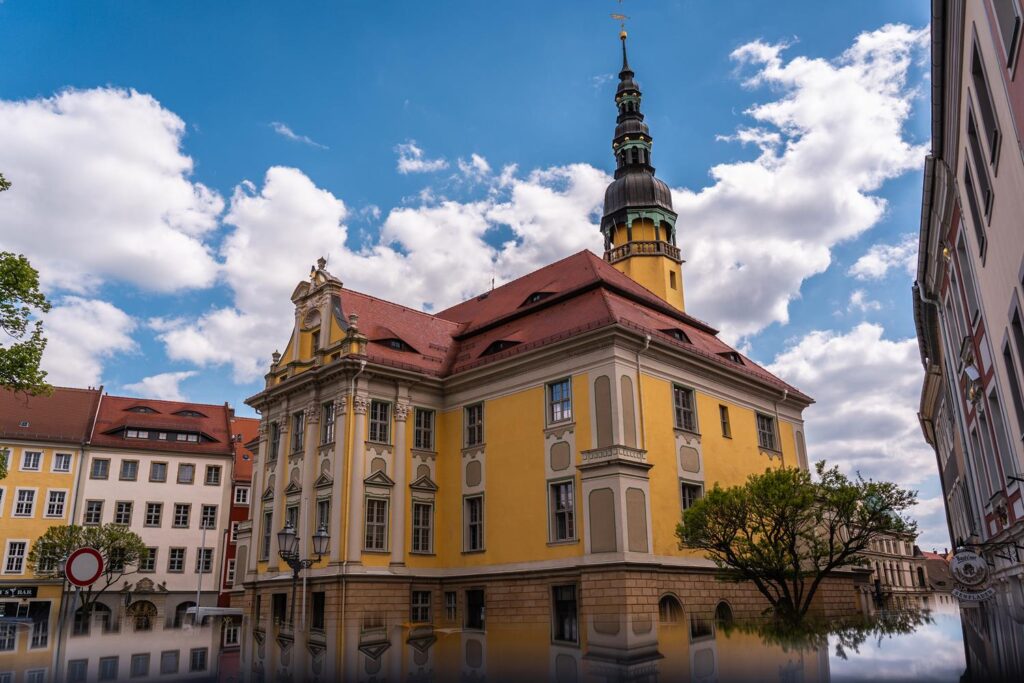
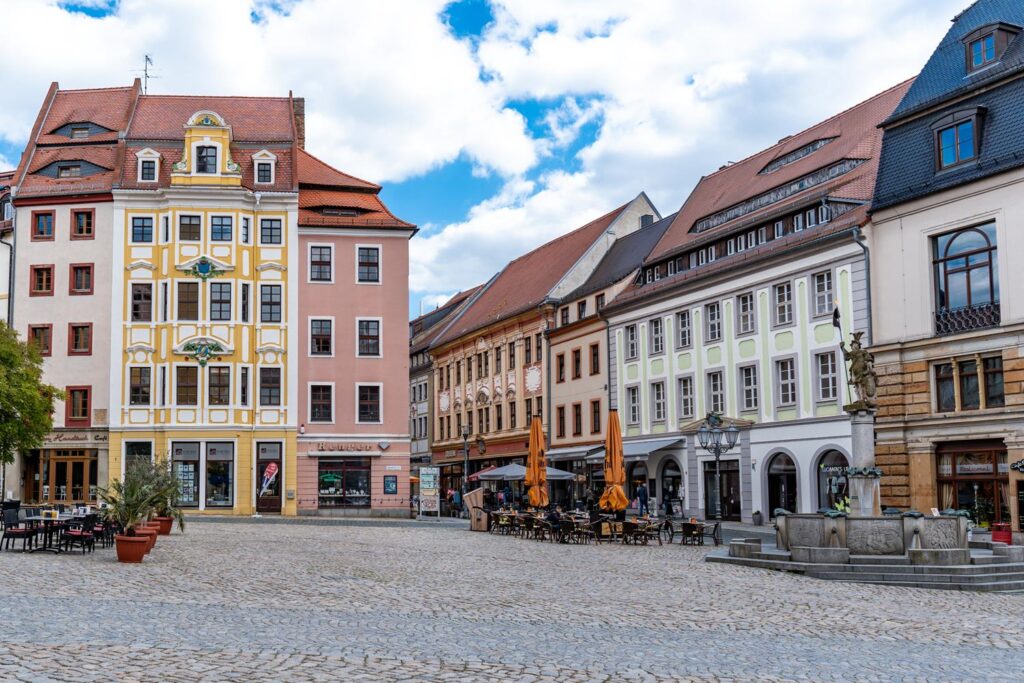
Ruins of St. Nicholas Church
The Gothic St. Nicholas Church was built in 1444. A few years later, a cemetery was also established on its grounds. After an attack on the city in 1620, the church fell into ruin and was never rebuilt despite plans to do so. Today, the enchanting remains of the church still serve as a cemetery, accompanied by a small chapel.
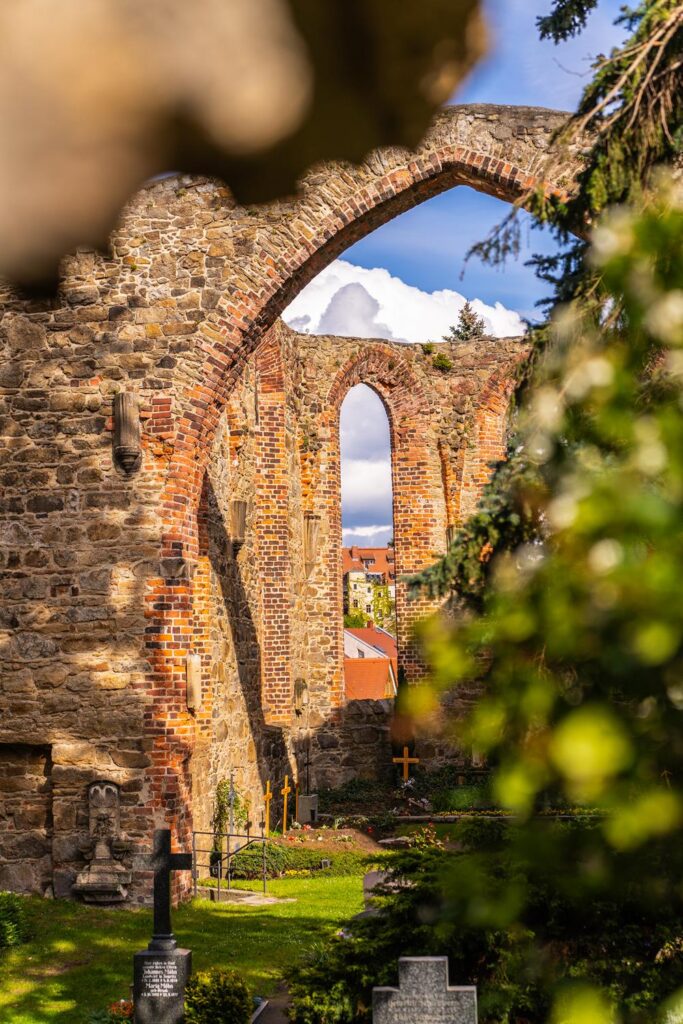
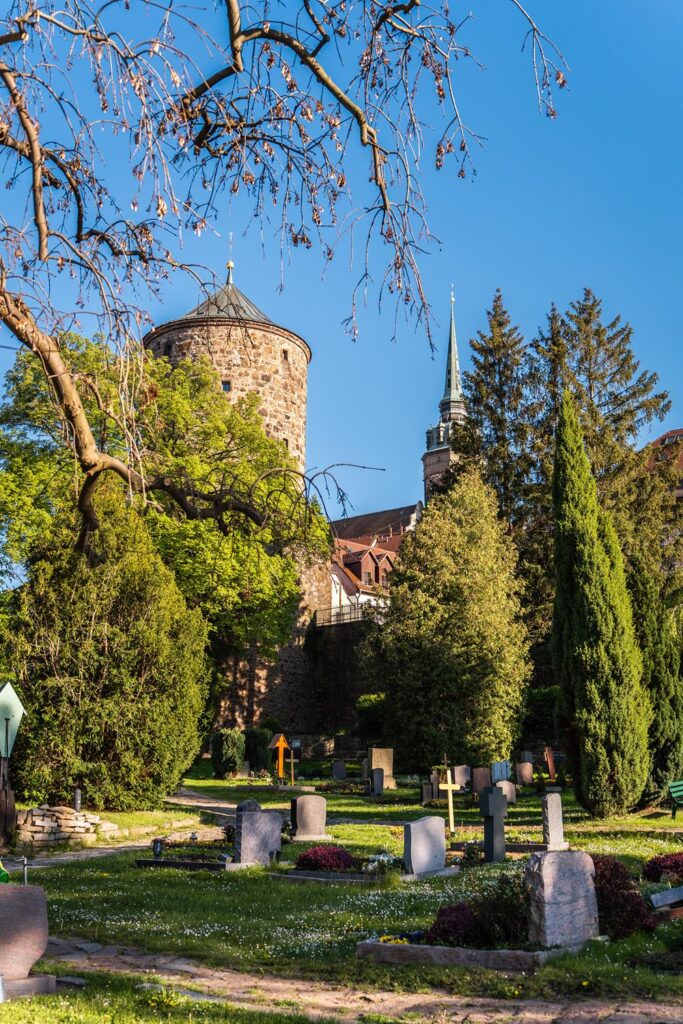
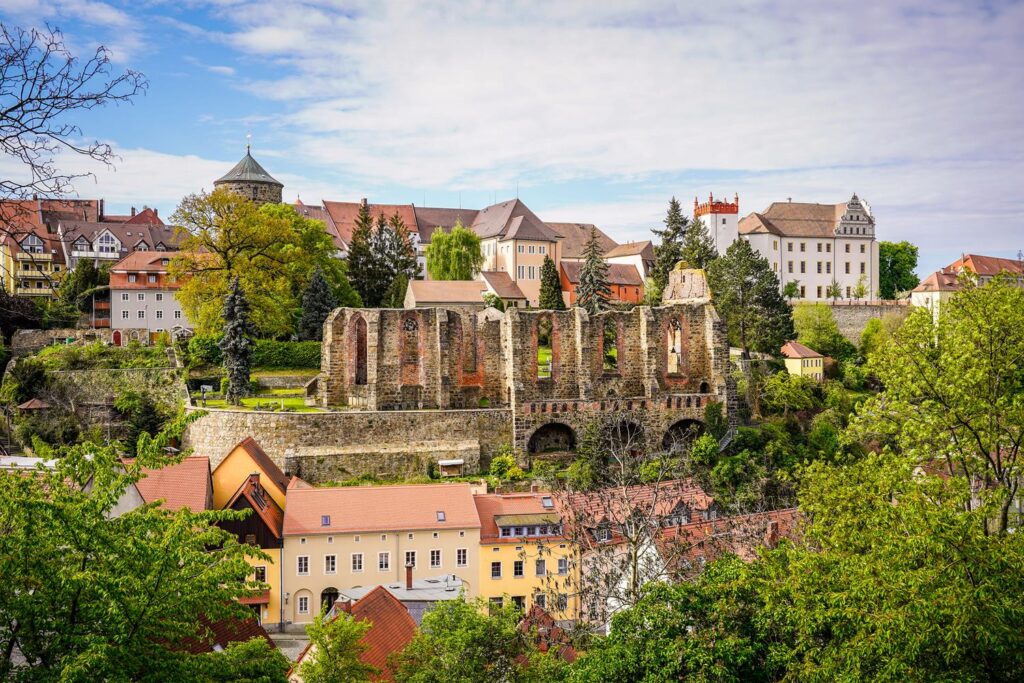
Peace Bridge (Friedensbrücke)
The Peace Bridge in Bautzen is one of the largest stone arch bridges in Saxony. It spans the Spree Valley at a height of 20 meters and is 181 meters long. The breathtaking view from the Friedensbrücke is the most common motif of the city, appearing not only in photographs but also on book covers related to Saxony.
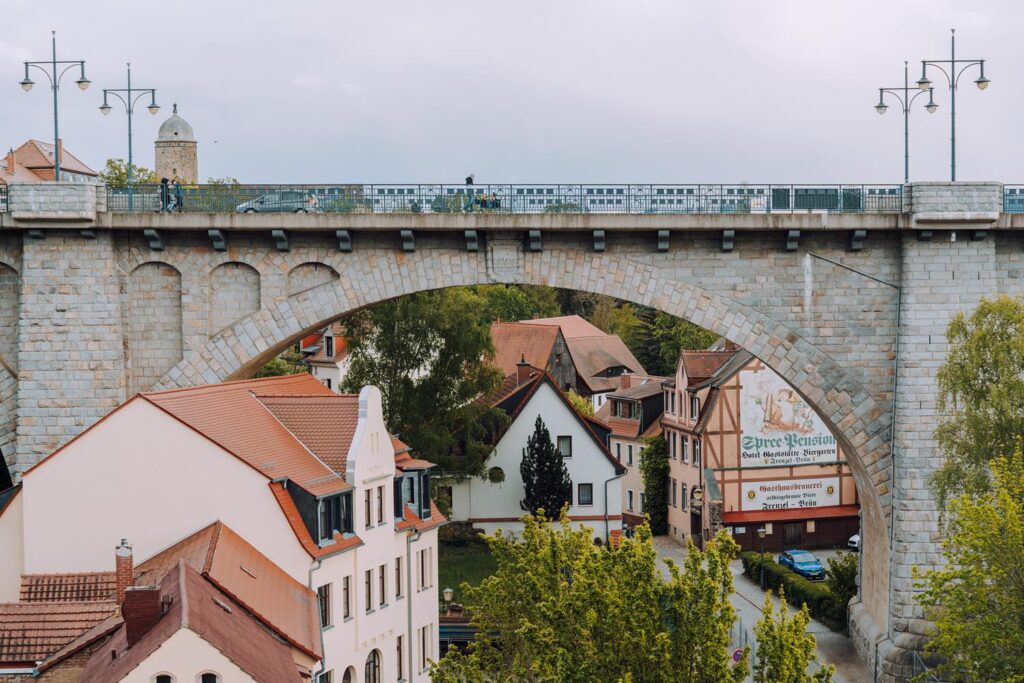
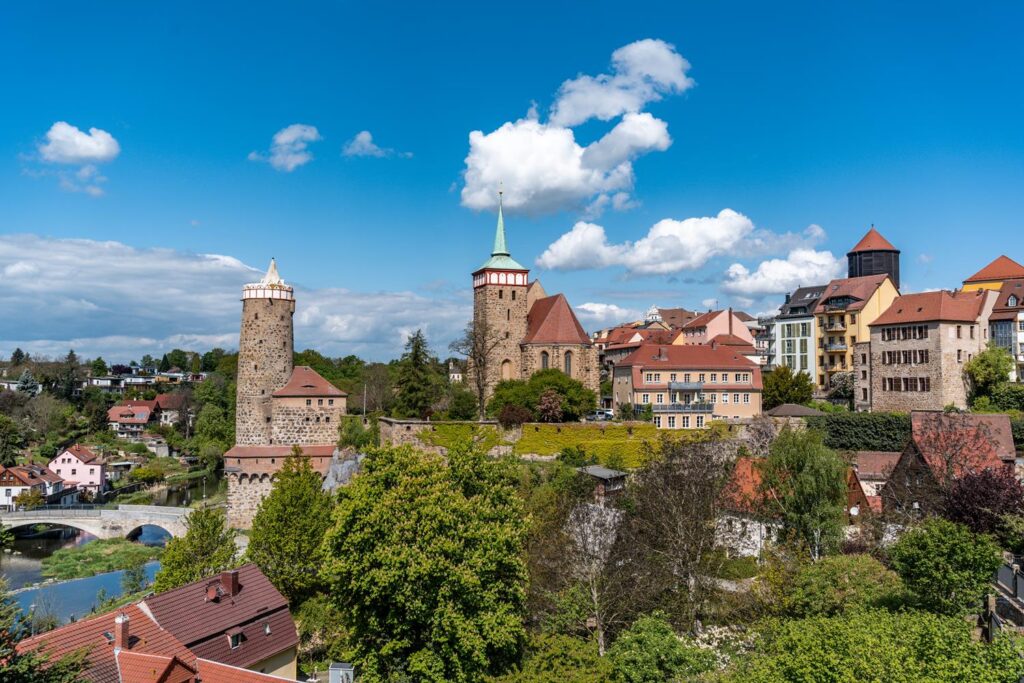
Defensive Towers
Bautzen has 17 defensive towers. That’s a record number! You can even climb some of them. Although I won’t tell you about all of them, I will describe a few of the most characteristic ones.
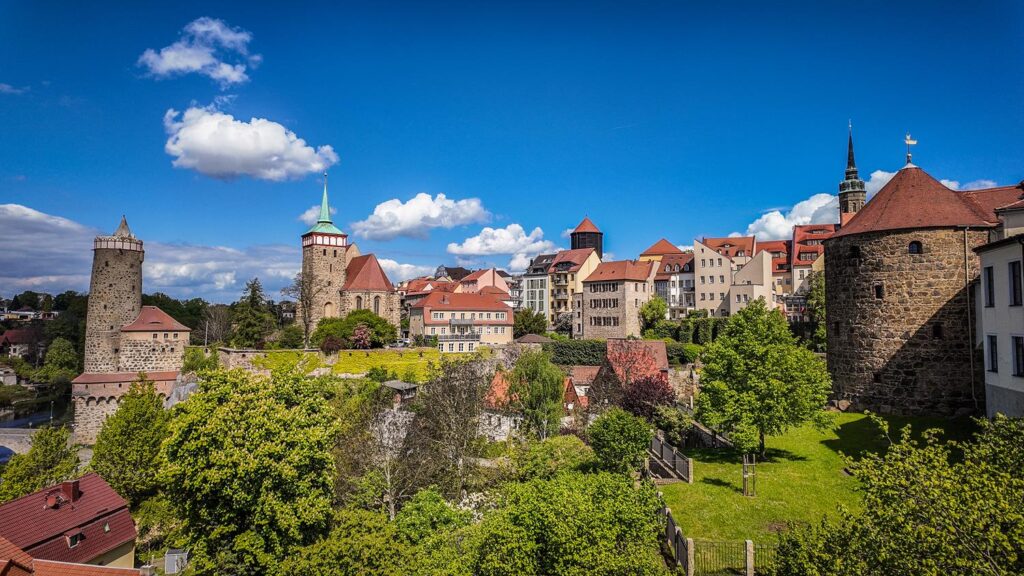
Leaning Tower (Reichenturm)
The Leaning Tower is 56 meters high and leans by 1.41 meters. Its history dates back to the 15th century. After a series of destructions, the city decided to place a baroque dome on the tower. Safety measures prevented the tower from toppling during World War II. In 2016, the tower was renovated. From the viewing platform, you can see the Old Town.
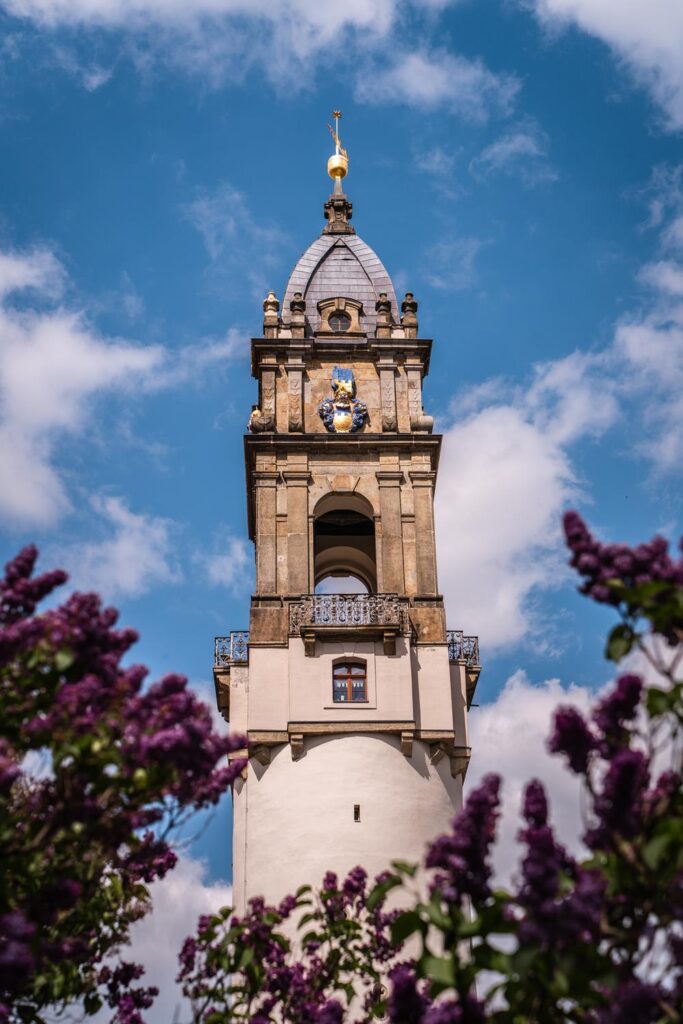
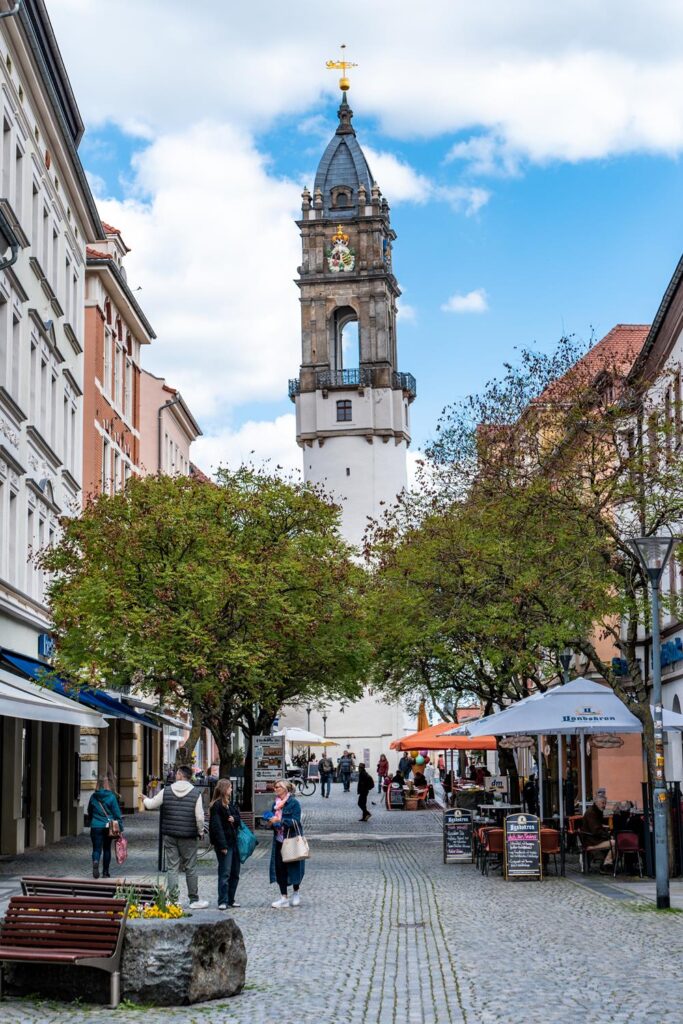
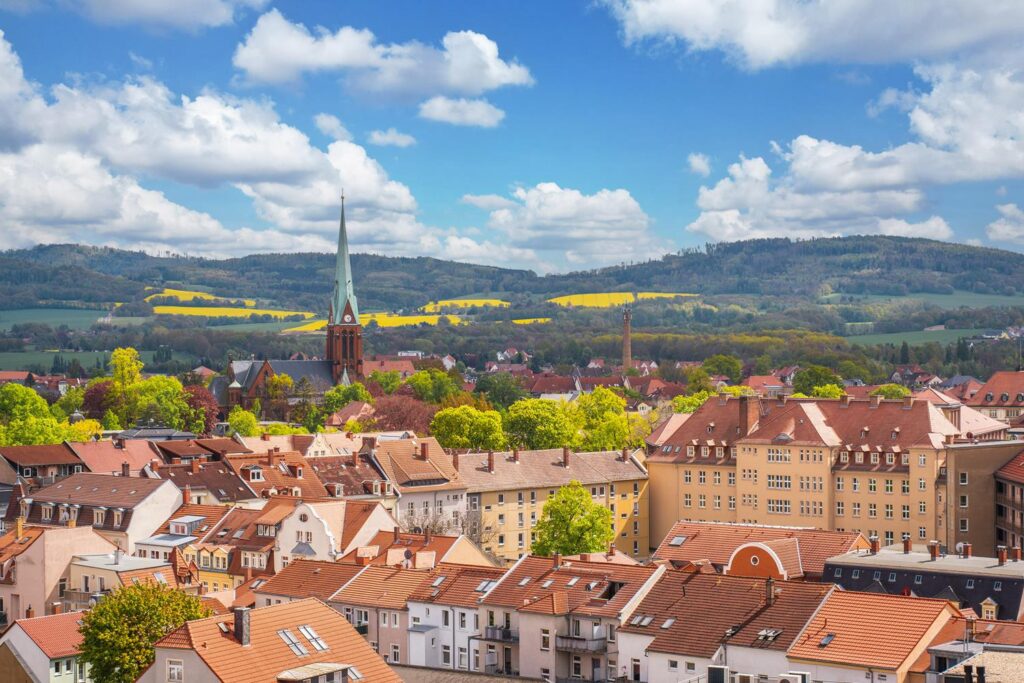
Old Waterworks (Alte Wasserkunst)
The Old Waterworks is a tower-shaped building that once served to supply the city with water. It is located near the Mühltor gate in the Old Town and is one of the landmarks of Bautzen.
The listed building is open for tours. In addition to the Technical Museum, it offers a platform that you can reach from the basement by climbing 184 steps. It provides a view of the Lusatian Mountains.
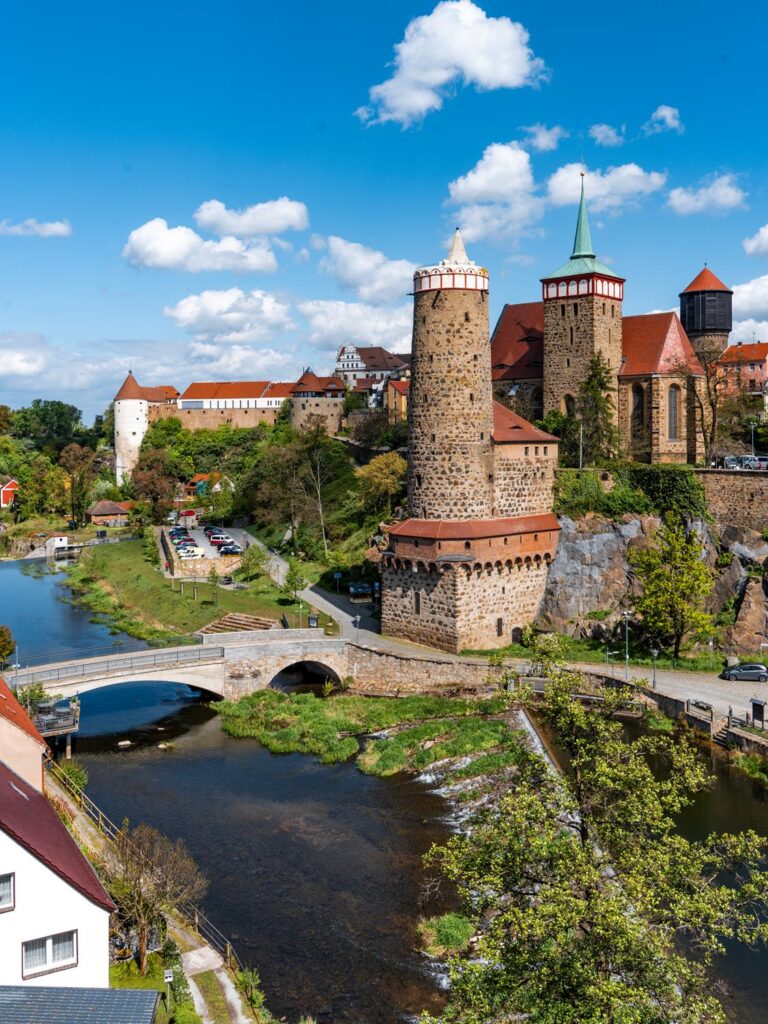
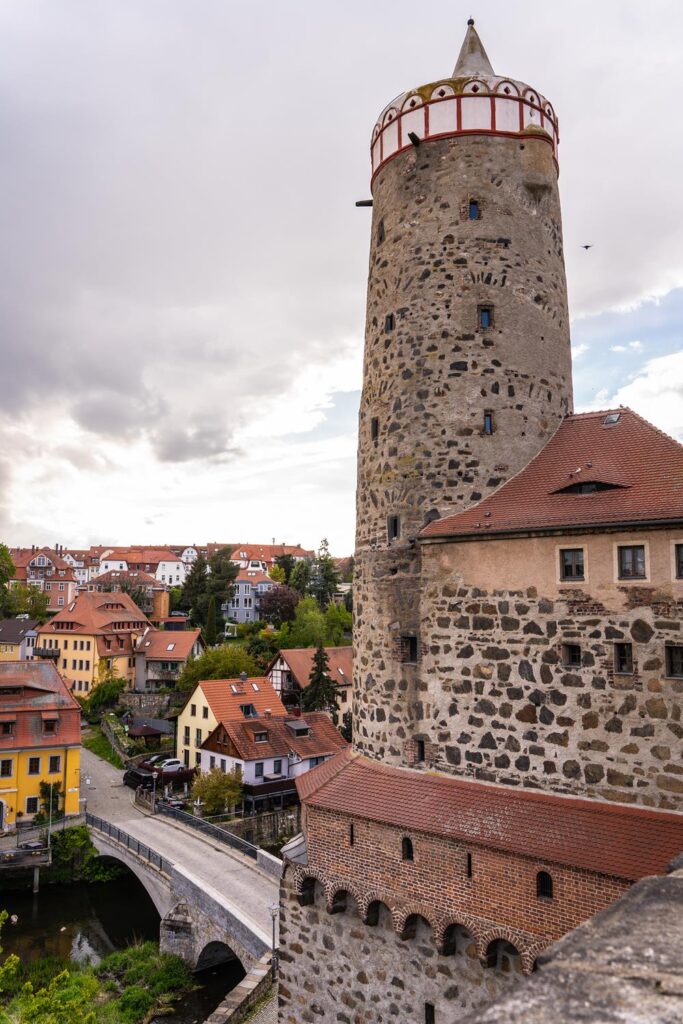
St. Nicholas Tower (Nicolaiturm)
St. Nicholas Tower was built in the 16th century at the northern city gate. Together with the fortified St. Nicholas Church, it guarded the trade route “via Regia.”
During the war, the northern city gate was walled up, and the tower’s dome burned down. Only in 1775 did the dome regain its conical shape.
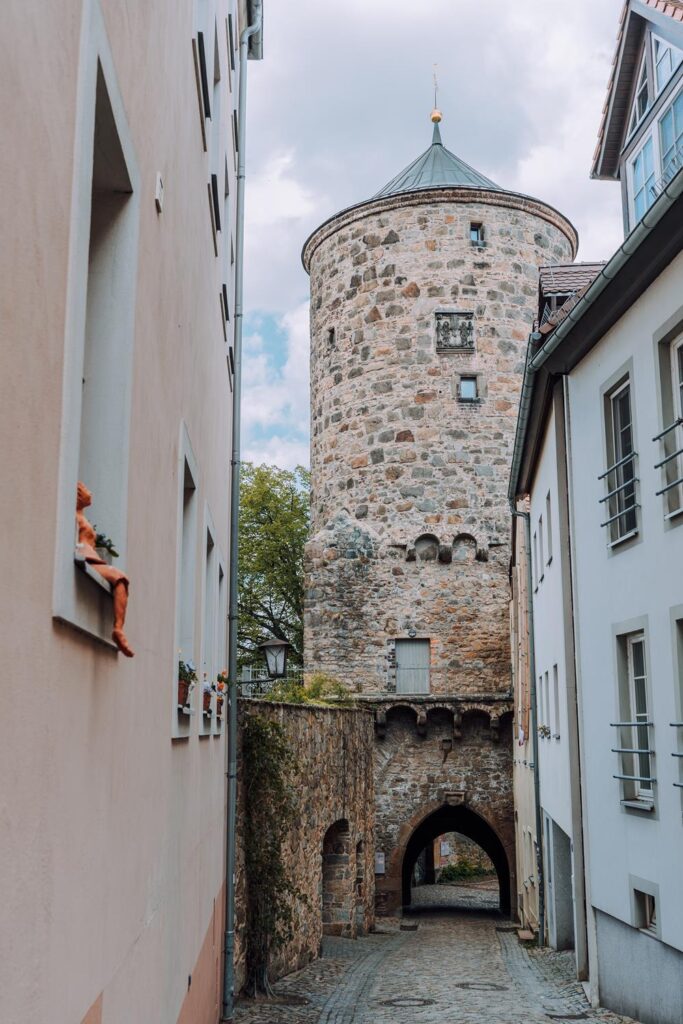
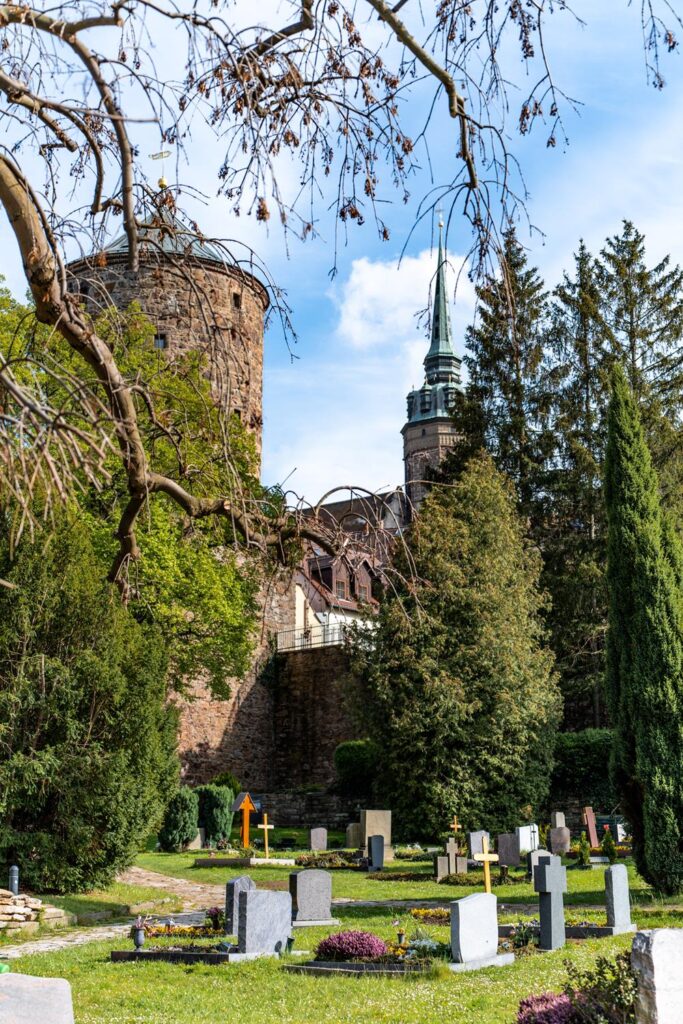
Matthias Tower (Matthiasturm)
Matthias Tower is the main entrance to the Ortenburg Castle. It is named after the bas-relief of King Matthias Corvinus of Hungary, which is found on the building’s walls. The tower secured access to the castle complex with a drawbridge when the castle was separated from the city by a moat.
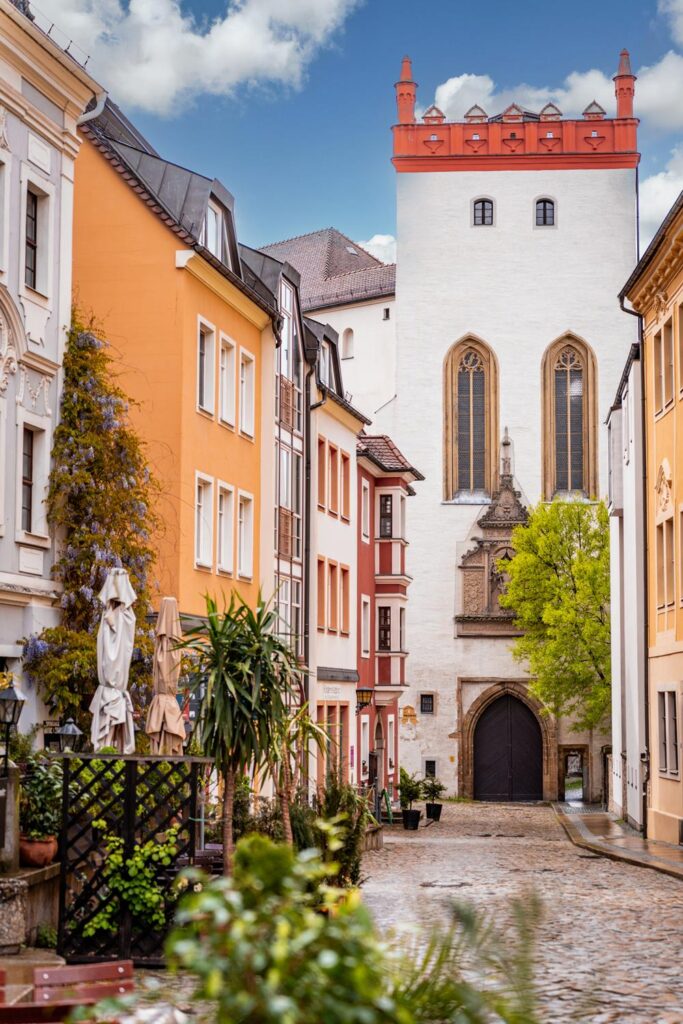
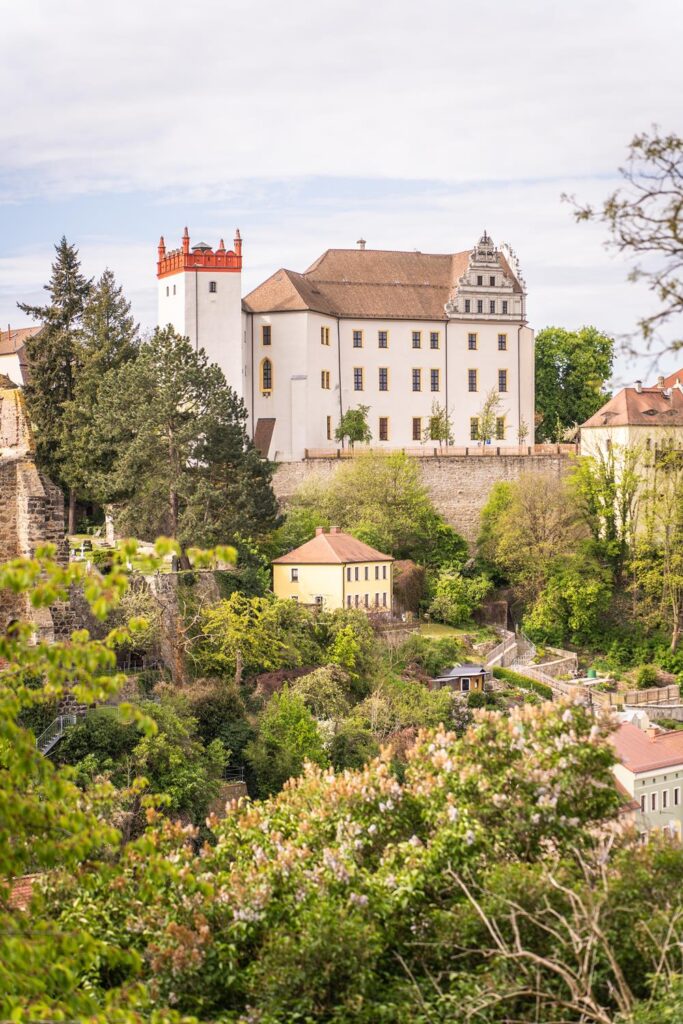
Mühltor Gate
This is the smallest medieval gate in Bautzen and also the entrance to the city from the west. It was built after the Hussite attacks in the 15th century. In its current form, it has existed since 1606. The arches of the Mühltor Gate are made of hand-painted bricks.
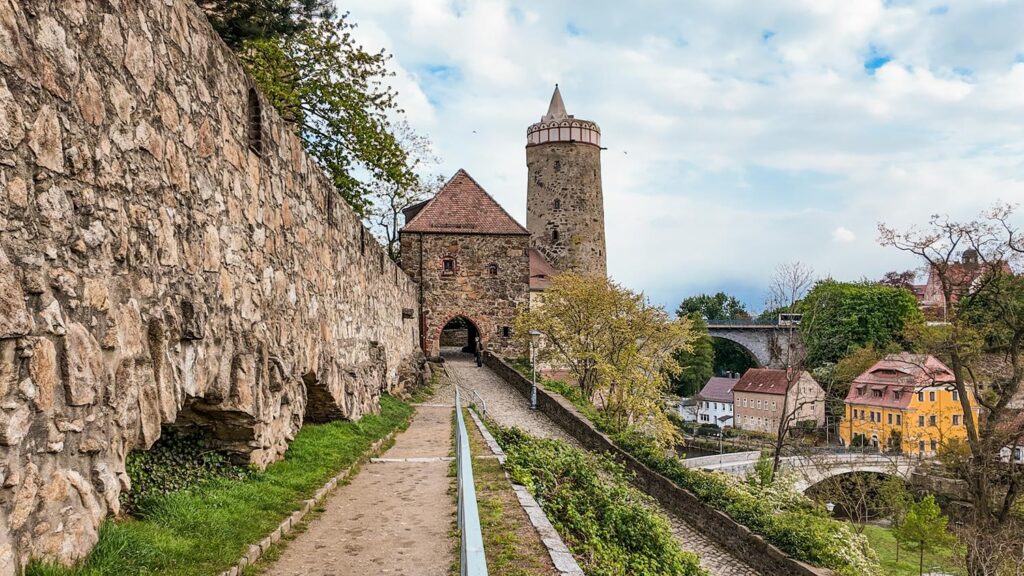
Sorabian Museum
The Sorabian Museum in Bautzen is a museum of the culture of the Sorbs, one of the four officially recognized national minorities in Germany. It was established in 1900 in the Sorbian House, but was closed by the Nazis and reopened only in 1989.
The museum has gathered about 35,000 exhibits. Most of them belong to the material heritage, but you can also admire photographs and works of Sorbian artists. The museum library has about 6500 volumes.
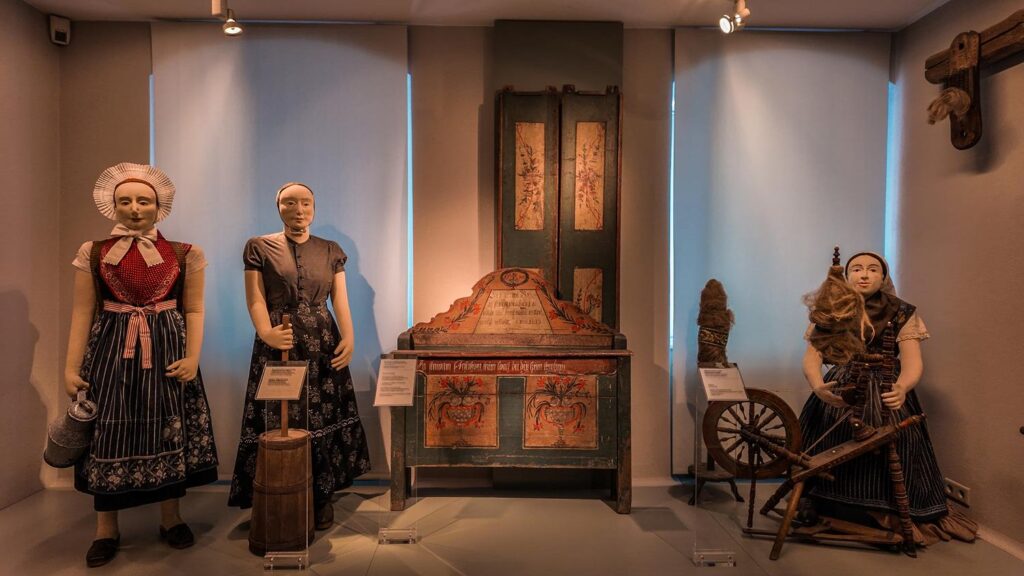
Museum of Bautzen
The Museum of Bautzen is one of the largest museums in Saxony. It has an area of 2400 m² and collections of about 400,000 items.
The museum visit includes three different sections. On the ground floor, the exhibition covers the period from the first traces of settlement in the region to everyday life in the 19th century. The first floor presents the history of the city. On the second floor, important works of art are displayed.
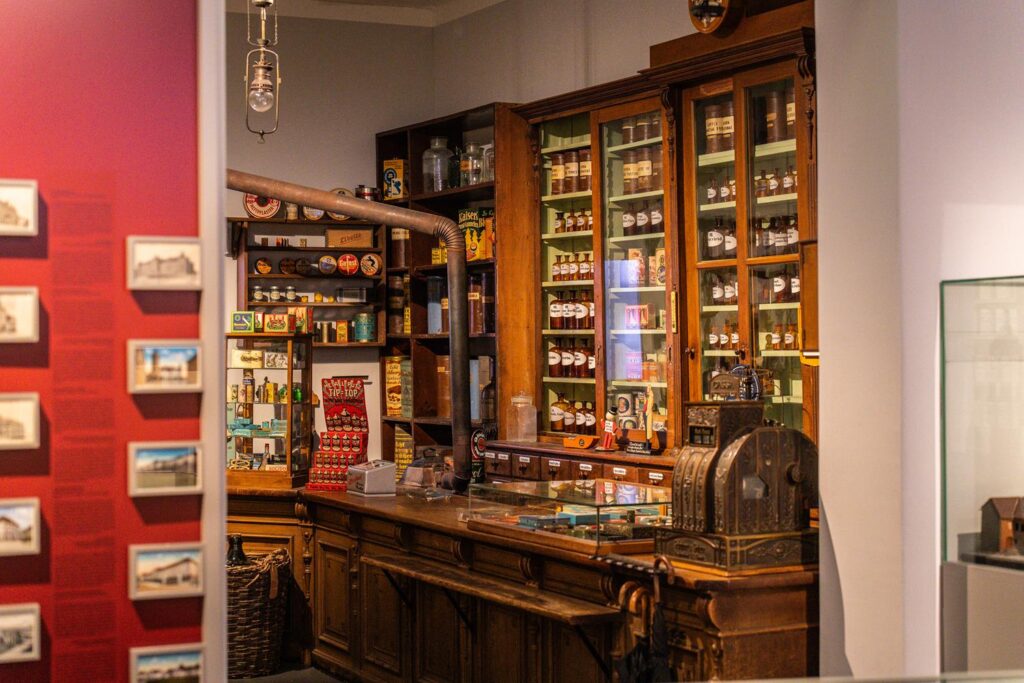
Mustard Museum
This is a truly unusual museum! The Mustard Museum in Bautzen (“Bautz’ner Senfmuseum”) presents the history of the famous mustard called Bautz’ner Senf. On-site, you can taste dozens of types of handmade mustard. In the shop, in addition to the classics, you will find other interesting products made from mustard seeds.
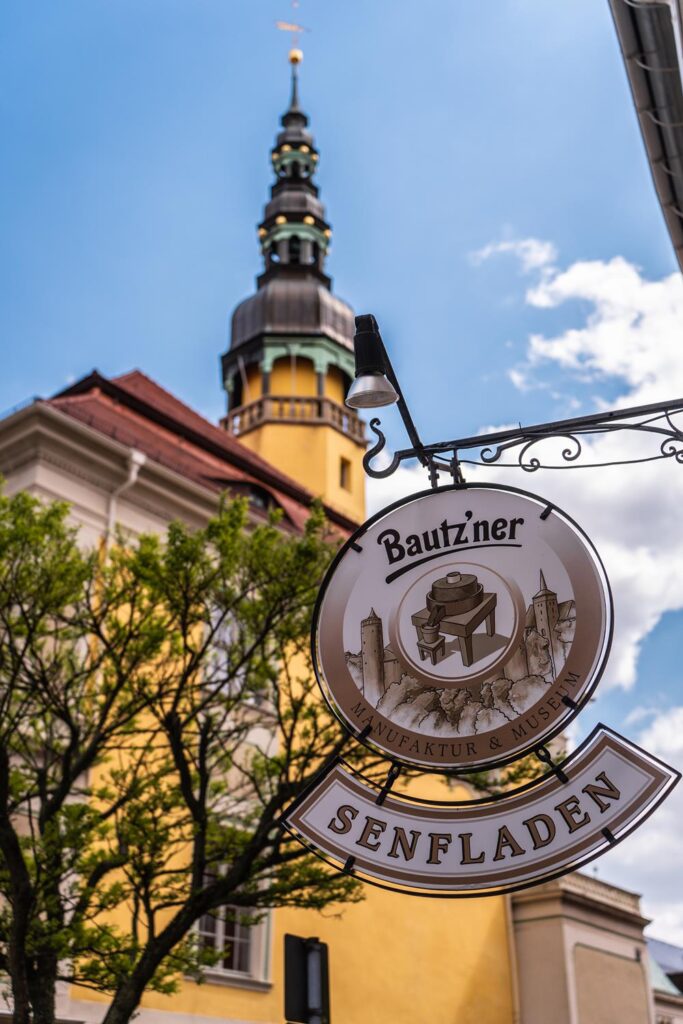
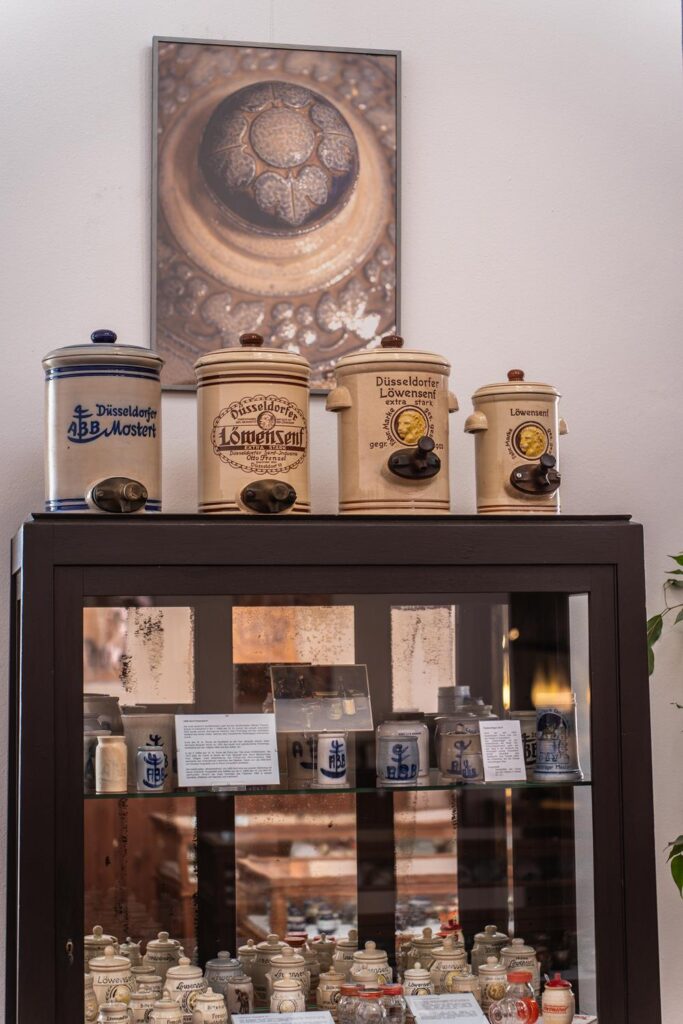
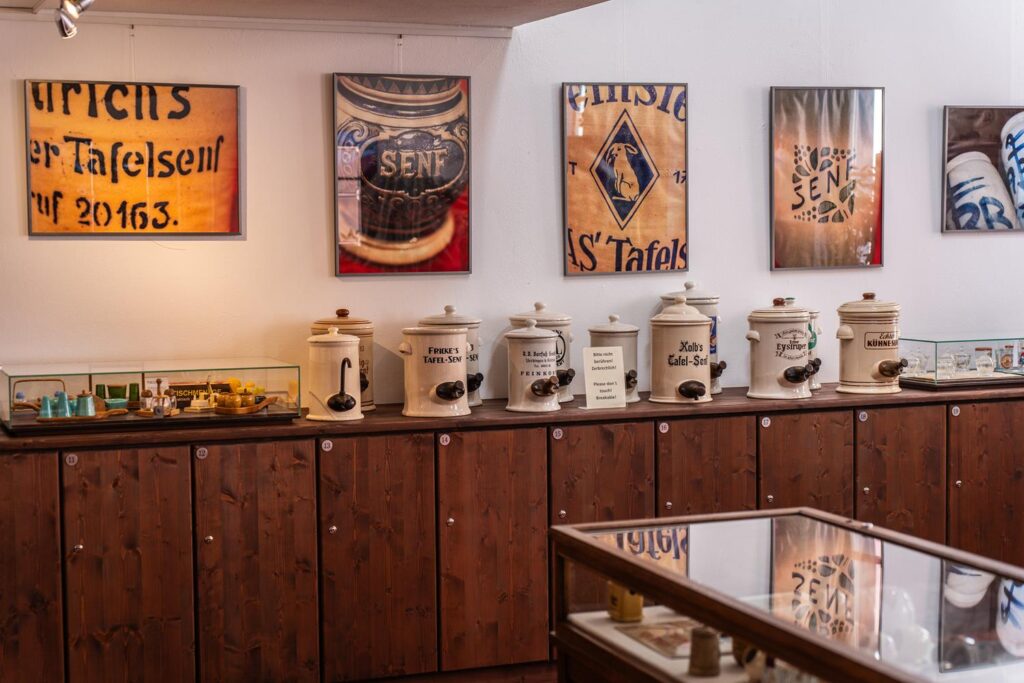
Witch’s House (Hexenhäusel)
Hexenhäusel is one of the oldest residential buildings in Bautzen, built before 1604 and surviving all fires and wars. According to folk tales, this was because it was protected by a spell cast by a Gypsy witch. The house was reconstructed in 1959-1960 and is listed as a historic monument.
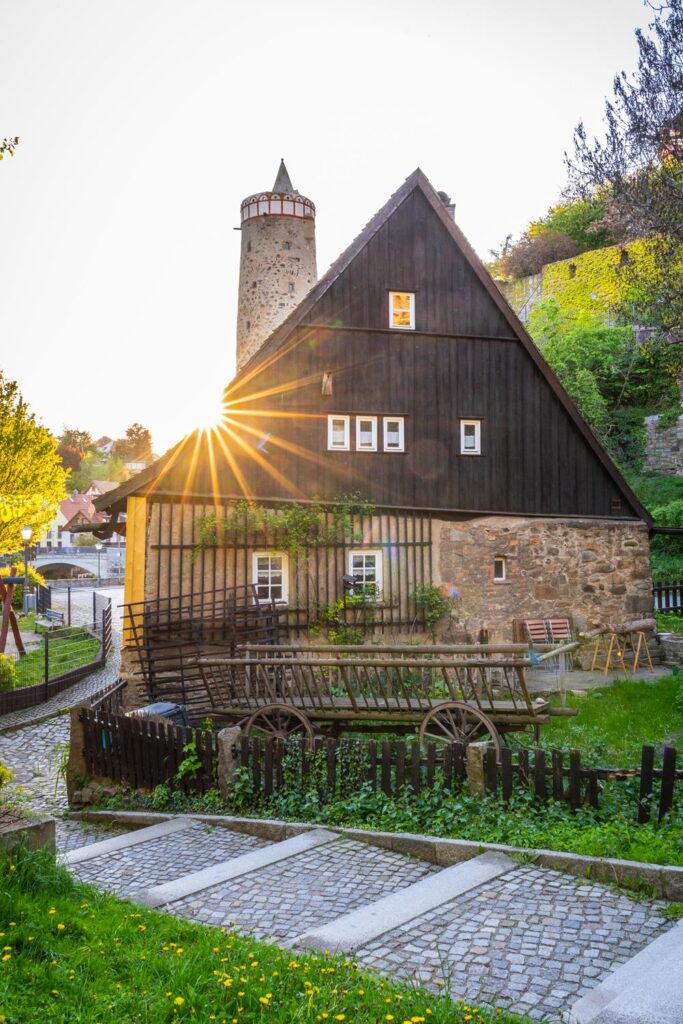
Stasi Prison (Gedenkstätte)
The former Bautzen I and Bautzen II centers, or Stasi prisons, were used in the past to eliminate political enemies during the National Socialist regime.
Today, the former Bautzen II prison serves as the Bautzen Memorial Site. You can visit cells, prison courtyards, and two prisoner transporters. Permanent exhibitions cover the historical background and biographies of the prisoners.
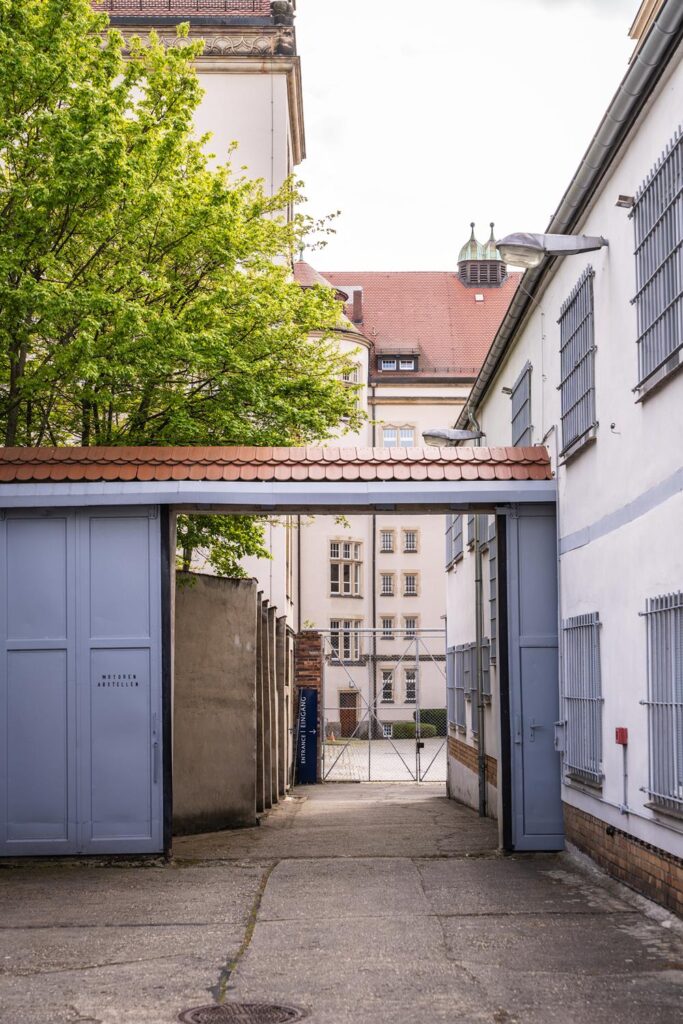
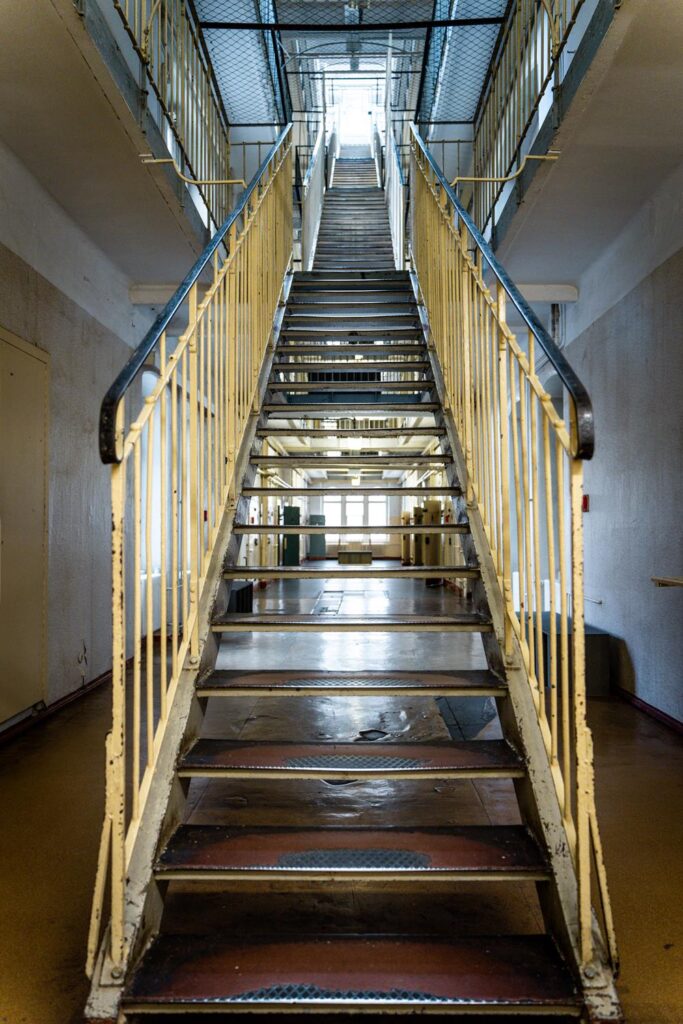
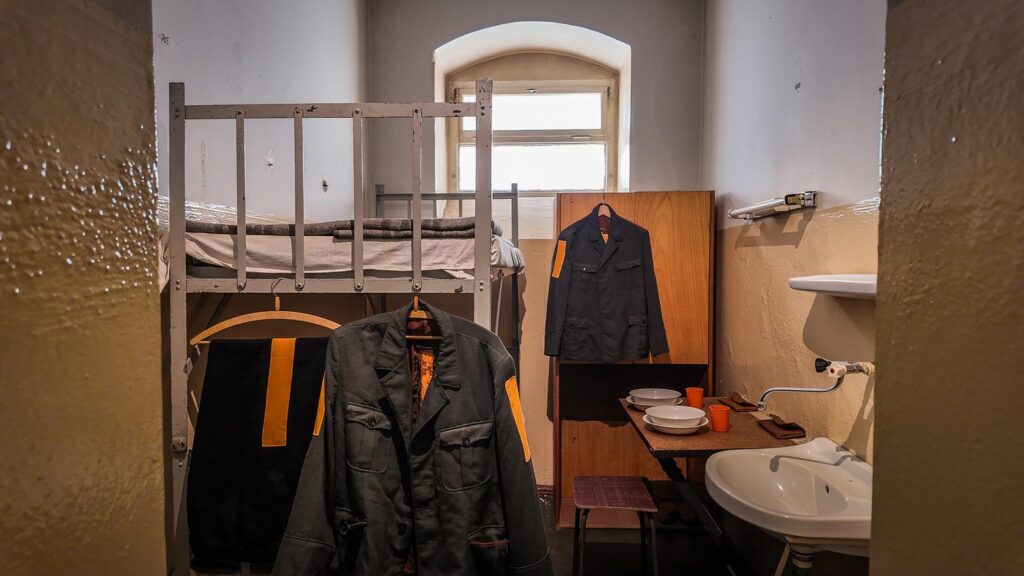
Biosphere Reserve in the Land of a Thousand Ponds
In Saxony, an interesting attraction is also the UNESCO biosphere reserve of the Upper Lusatian Heath and Pond Landscape (also known as the Land of a Thousand Ponds). The region, where the reserve is located, consists of over 350 ponds surrounded by dune forests, meadows, fields, floodplains, and heaths.
The reserve offers diverse conditions for many species. It is home to over 5000 types of animals and plants, of which over 1200 are endangered species. With a bit of luck, you can encounter white-tailed eagles, otters, wolves, or swans there.
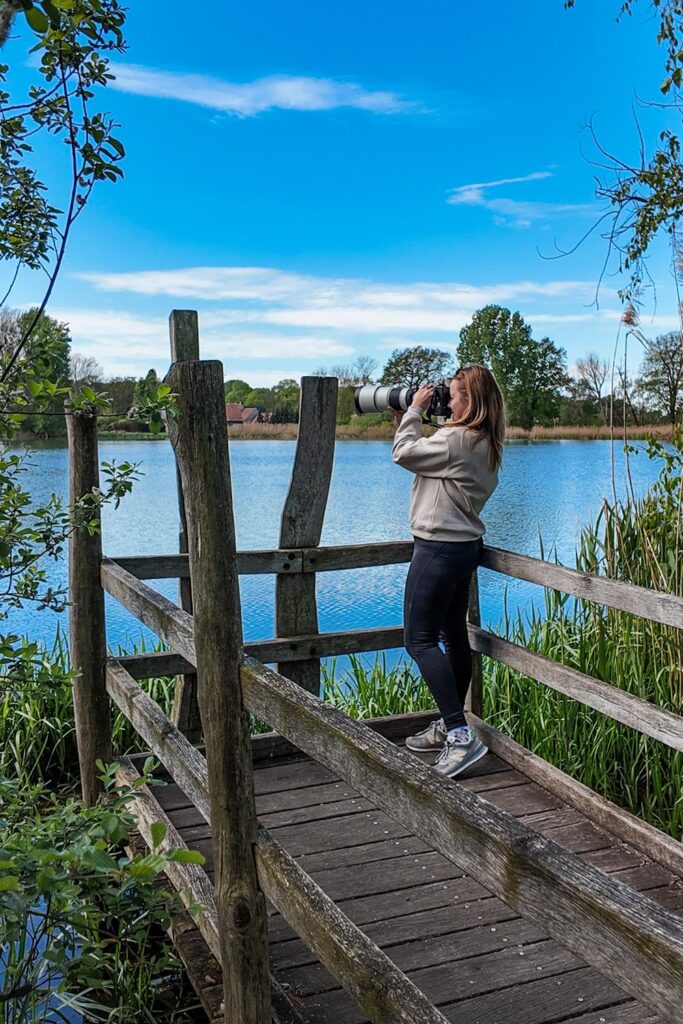

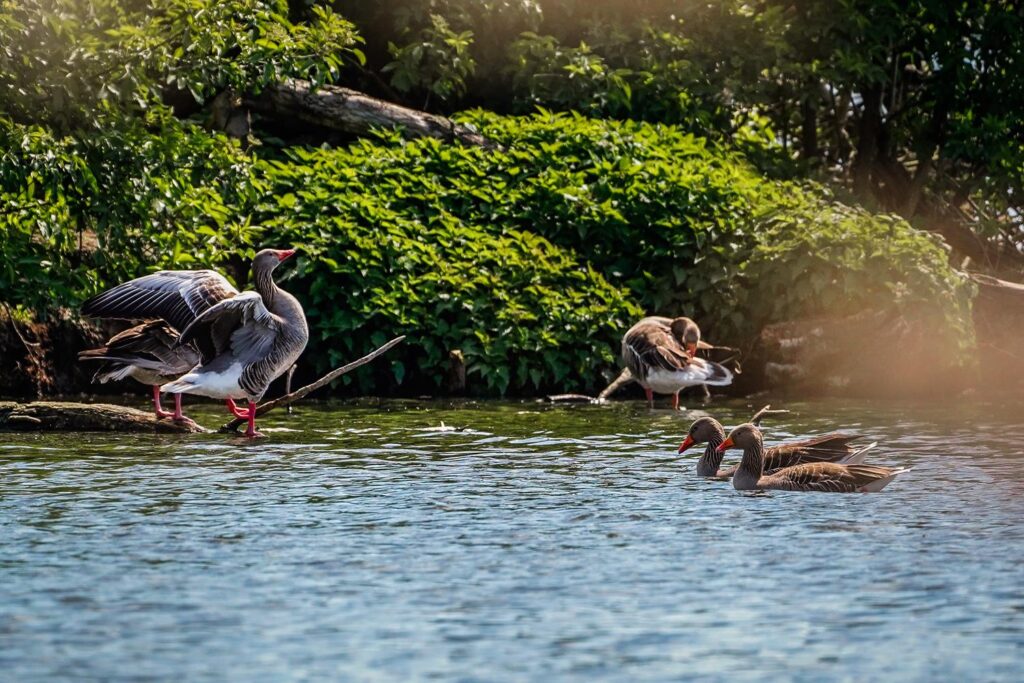
House of a Thousand Ponds (Haus der Tausend Teiche)
The House of a Thousand Ponds is a center with tourist information and a souvenir shop. If you visit it, check out the exhibition full of information about the Upper Lusatia landscape and the reserve!
Where to stay in Bautzen
For three nights, we stayed in the center of the Old Town, in a charming hotel ApartOne. Very close to attractions, we had breakfast in a palace nearby + free parking was outside the Old Town. Leaving the link: ApartOne Altstadt-Hotel
Bautzen is an extremely interesting city – and so close to us. If you have the chance, be sure to visit. Which place fascinated you the most? Let us know!
If you’re interested in traveling in Germany, check out my other posts:
- Upper Lusatia – a plan for a trip around Saxony
- Görlitz – see the attractions of the city with over 4000 monuments
- What to Do in Leipzig: A Guide to the Must-See Attractions
- Exploring Lübeck: A Gem of Medieval Architecture and Cultural Heritage
- Hildesheim: Fascinating Attractions to Explore
- Saxony-Anhalt: Must-See Attractions You Can’t Miss
- Things To Do In Quedlinburg – Tips for a Day Trip
- Wernigerode: Unveiling the Fairy Tale Beauty of Germany’s Hidden Gem!